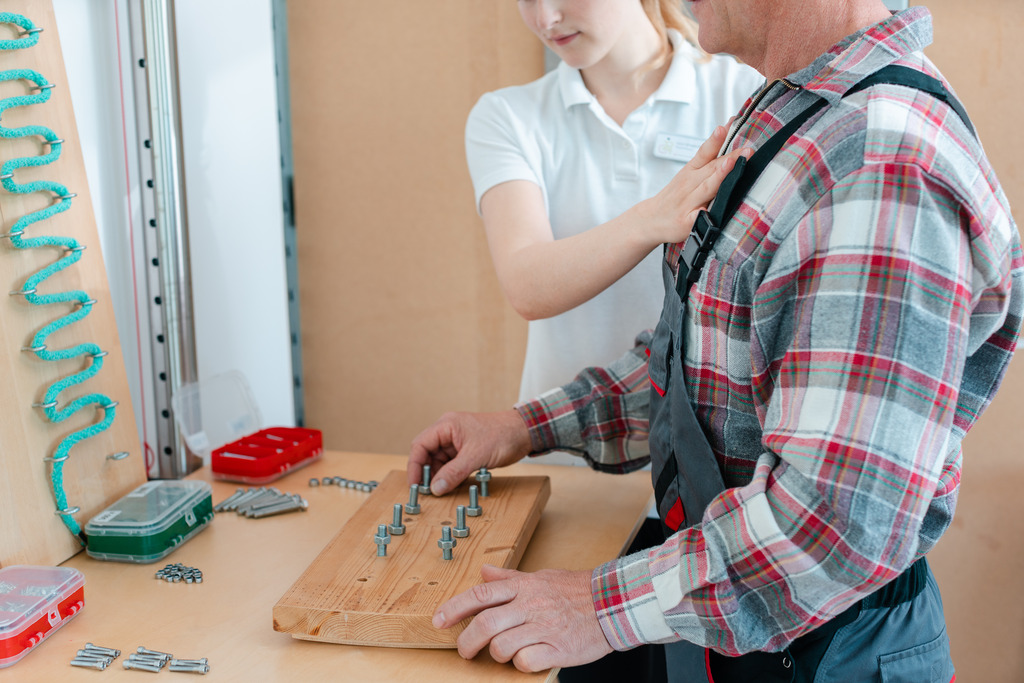The 5 Best Benefits of OT Exercises for Stroke Patients
A stroke can be devastating—and they are alarmingly more common than you might think. That’s one reason why we believe it is so important to implement effective OT exercises for stroke patients at East Carolina Rehabilitation and Wellness.
Every 40 seconds, an American has a stroke, and every 3.5 minutes, someone dies of a stroke, according to information from the Centers for Disease Control.
Age is also a factor—while strokes can occur at any age, they are most often seen in those ages 65 and up. Most of these strokes are ischemic strokes, meaning the blood flow to the brain is blocked.
Although these are frightening statistics, the good news is that there are several OT exercises for stroke patients that can help them regain mobility. OT stands for occupational therapy, our extensive rehabilitation services in Greenville at East Carolina Rehabilitation and Wellness.
We’ll look at the best benefits of OT exercises for stroke patients, what to expect at an occupational therapy session, and how occupational therapy differs from physical therapy.
The 5 Best Benefits of OT Exercises for Stroke Patients
Occupational therapy typically focuses on smaller movements of the hand to improve functionality. Following are some benefits.
1. OT Exercises for Stroke Patients Can Improve the Range of Motion
Through wrist, hand and finger exercises, the range of motion can gradually improve. This gives you a greater chance of success when preparing to perform the tasks of everyday living.
As a result, this dramatically helps your mobility and prepares you for your return home.
2. It Decreases Pain
Many find that by gradually building their strength, they also experience pain reduction. This is because occupational therapy concentrates on both calming the mind and relaxing muscles. In addition, this reduces the need for pain medication.
In fact, OT is often an integral part of chronic pain management plans.
3. It Helps Your Visual Skills
While your sight may not be the first thing you think of when you consider recovering from a stroke, you can have tracking control issues and even difficulty with depth perception. Occupational therapy can help with scanning and pre-reading strategies to help you regain and refine your ability to read.
4. It Helps You Operate Adaptive Equipment
You’ve likely seen someone use a “grabber” to retrieve an item from the floor or from a shelf. This is an example of adaptive equipment. However, for someone who has had a stroke, even a simple motion like pressing the handle on the grabber can be challenging.
Not only will an occupational therapist let patients know about what adaptive equipment is available to help them, but OT exercises for stroke patients can teach you how to use them effectively.
5. It Enables You to Recover Faster
Through occupational therapy exercises for stroke patients, you can recover faster from your injury. Perhaps just as important, it means you can return home as soon as safely possible, being in a familiar environment surrounded by those you love.
What Should You Expect at an Occupational Therapy Session?
The first session will often center on a detailed evaluation and determination of your current level of functioning. Your medical chart and doctor’s instructions will be examined, and a course of care will be created.
At your OT session, you may expect exercises that will teach you new ways on how to complete the tasks of everyday living. This may include how to:
- Get dressed
- Brush your hair
- Go to the toilet
- Brush your teeth
- Button shirts or zip pants
You’ll also have regular exams to help test your range of motion so a plan can be carefully tailored to fit your needs.
What’s the Difference Between Occupational Therapy and Physical Therapy?
While there are some things that occupational therapy and physical therapy have in common, the main difference is that while physical therapy concentrates on activities that involve major motions –such as standing and walking—occupational therapists concentrate on tasks of everyday living.
An occupational therapist will help you learn how to perform daily tasks through the use of compensatory techniques and/or the use of adaptive/special equipment. These tasks may include getting dressed, brushing your teeth or bathing.
You can learn more about the differences between these two disciplines in our earlier blog here.
Take The Next Step for Occupational Therapy in Greenville at East Carolina Rehabilitation and Wellness
We realize that the effects of a stroke can be devastating on your day-to-day life. That’s why we’ve created the best rehabilitation program to help you reach your goals while being surrounded in a therapeutic environment.
If you’re ready to take the next step, speak with your doctor or health care provider about East Carolina Rehabilitation and Wellness for rehabilitation, or contact us for more information.

